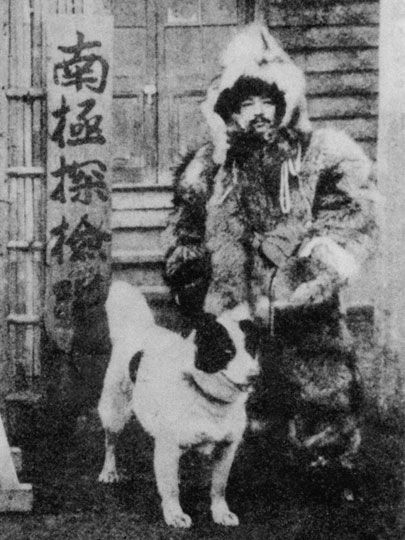SHIRASE NOBU

Scorned at departure, celebrated upon return, Shirase Nobu would defy scepticism in Japan and abroad and, in doing so, forge a unique path into the heart of Antarctica.
At age 11, Shirase Nobu would write in a diary of his obsession with the North and South poles. 38 years later he would set off on a journey that would see his exploits written in to the history books.
The acclaimed explorer was born in Konoura, in the Dewa province of Japan in 1861. Raised on a hearty diet of tales from the likes of Columbus, Magellan and John Franklin, Nobu chased adventure and discovery from an early age.
In 1881 he joined the military and in this career began exploring the islands around Japan. In 1890 he then joined the ill-fated Chishima Exploration to the island group northeast of Japan and up to Russia. 19 expedition members would subsequently die from various causes, including scurvy and disappearances from inaccurate navigation. Nobu eventually returned to Japan severely weakened by scurvy and starvation.
Un-phased by the disastrous journey he set his sights on Antarctica in 1909. The proposed expedition was not a popular one with the public or the government of the day and Nobu struggled to gain funding. Finally he secured support (and a very small budget) to complete his mission.
In 1910, the 100 ft long Kainan Maru trawler (the ‘Southern Pioneer’) started the long trip south. The explorers would encounter a similar reception in New Zealand as they did at home – disdain and disbelief that a small boat and crew would withstand the extreme challenges of the icy oceans.
Nobu’s first attempt at Antarctic landfall ended due to snowstorms and harsh weather, forcing the boat to retreat to Australia. Again he faced a difficult response from the locals and the government in his quest for accommodation and supplies. Nevertheless he was undeterred and, after wintering in Australia, the crew ventured south once more.
This time they were successful, the Kainan Maru making landfall on the unexplored King Edward VII Land and the eastern part of the Ross Ice Shelf.
At this time the Japanese explorer also encountered Amundsen’s ship in the Bay of Whales and knew he had been beaten to the pole. Still he continued on, surveying the coastline and leading a small crew close to the pole before a lack of supplies forced them to turn back.
Shirase Nobu was an explorer that defied his doubters around the world and united his country behind him. In 1912 he returned to Japan as a hero. While the world celebrated the race between Scott and Amundsen, Nobu’s efforts in ‘third place’ on a far smaller vessel were just as impressive.



